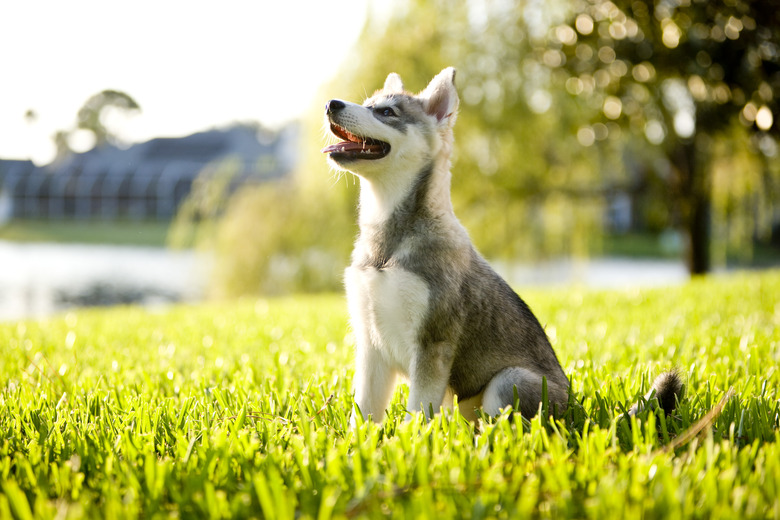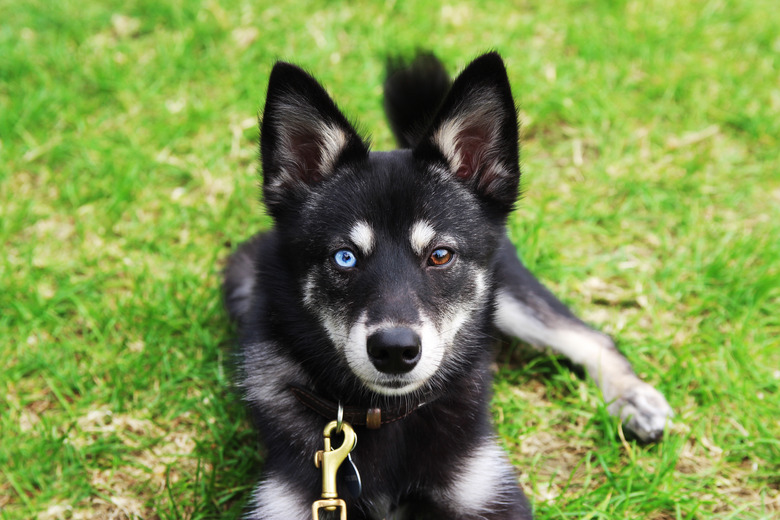Difference Between A Miniature Husky & A Klee Kai
The Alaskan klee kai and the miniature husky breed are very similar in appearance, but they are actually separate breeds with different characteristics. These small dogs are a great alternative to pet owners who love Alaskan and Siberian huskies but are smaller versions from the breed standard.
Since October 2020, the American Kennel Club accepts the klee kai as a recognized breed in the Foundation Stock Service Group. The Siberian husky is also a recognized breed in the working group, and while miniature huskies share the traits and characteristics, they do not meet the size requirements of the breed standard.
Alaskan klee kai standards
Alaskan klee kai standards
There are three recognized sizes of American klee kai. Toy breeds measure less than 13 inches tall at the withers and weigh only 6 to 12 pounds. Miniature klee kai measure 13 to 15 inches tall and weigh 10 to 18 pounds. The standard klee kai is the largest of the breed. They grow 15 to 17 1/2 inches tall and measure 16 to 25 pounds.
The breed was developed from Alaskan huskies and mixed with other native Alaskan breeds to achieve its small size. Dogs have the appearance of a small Siberian husky and have symmetrical markings on the face. There are three recognized colors: grey and white, red and white, and black and white.
Miniature husky breed standards
Miniature husky breed standards
The miniature Siberian husky is not a recognized breed, nor are they a mixed breed. Instead, they are bred from standard Siberian huskies and selectively bred to attain the small size. A standard Siberian husky male dog grows 21 to 23 1/2 inches tall and weighs between 45 and 60 pounds. The female dogs of the breed grow 20 to 22 inches tall and weigh 35 to 50 pounds.
Since there is no recognized miniature husky breed, there are no standards for their size. Typically, a miniature husky that is full-grown is nearly half the size of the standard breed dogs. They grow approximately 16 inches tall and weigh about 35 pounds. This makes them a slightly larger dog than the klee kai, but still a manageable size.
They have the same physical characteristics of the Siberian husky dogs. Coat colors come in a variety of combinations and range from all black to all white.
Comparing Personality Traits
Comparing Personality Traits
Miniature Siberian huskies are described as loyal, outgoing, and mischievous. As working dogs, they are active and energetic. They need plenty of exercise and enjoy every opportunity to run. Huskies are friendly and social and prefer plenty of company to being left home alone all day. Training a husky requires plenty of patience and positive reinforcement, as the breed tends to be independent and may be stubborn.
Klee kais are also loyal dogs and are described as vigilant and intelligent. They have a similar energy level to mini huskies and need exercise to stay physically healthy and mentally happy. They also have a high prey drive. Klee kai dogs are loving companions but tend to be more reserved with strangers. They can be vocal dogs and will often yodle, grumble, howl, or chirp. They tend to be more agreeable and less stubborn than mini huskies during training.
Both breeds are extremely active and should be kept on a leash or in a securely fenced yard. They can become destructive if they don't get enough activity. If you don't have space for them to run, consider other activities, such as swimming, carting, or agility, that will allow them to burn off excess energy.
Care and Other Considerations
Care and Other Considerations
Both breeds have dense, double coats and need regular grooming to prevent matted fur. They benefit from weekly brushing and a bath a few times each year. Grooming requirements may increase twice per year when the dogs are shedding their undercoat.
Both breeds are very healthy and have few inherited conditions. Mini Siberian huskies that may be used for breeding should have annual ophthalmology exams to check for juvenile cataracts. They should also receive a hip evaluation to check for hip dysplasia.
Klee kais should also have an ophthalmologist evaluation. Other recommended health screenings include an evaluation of the thyroid, patella, and heart, and a DNA test to look for factor VII deficiency. Factor VII is a protein that assists in blood coagulation.

